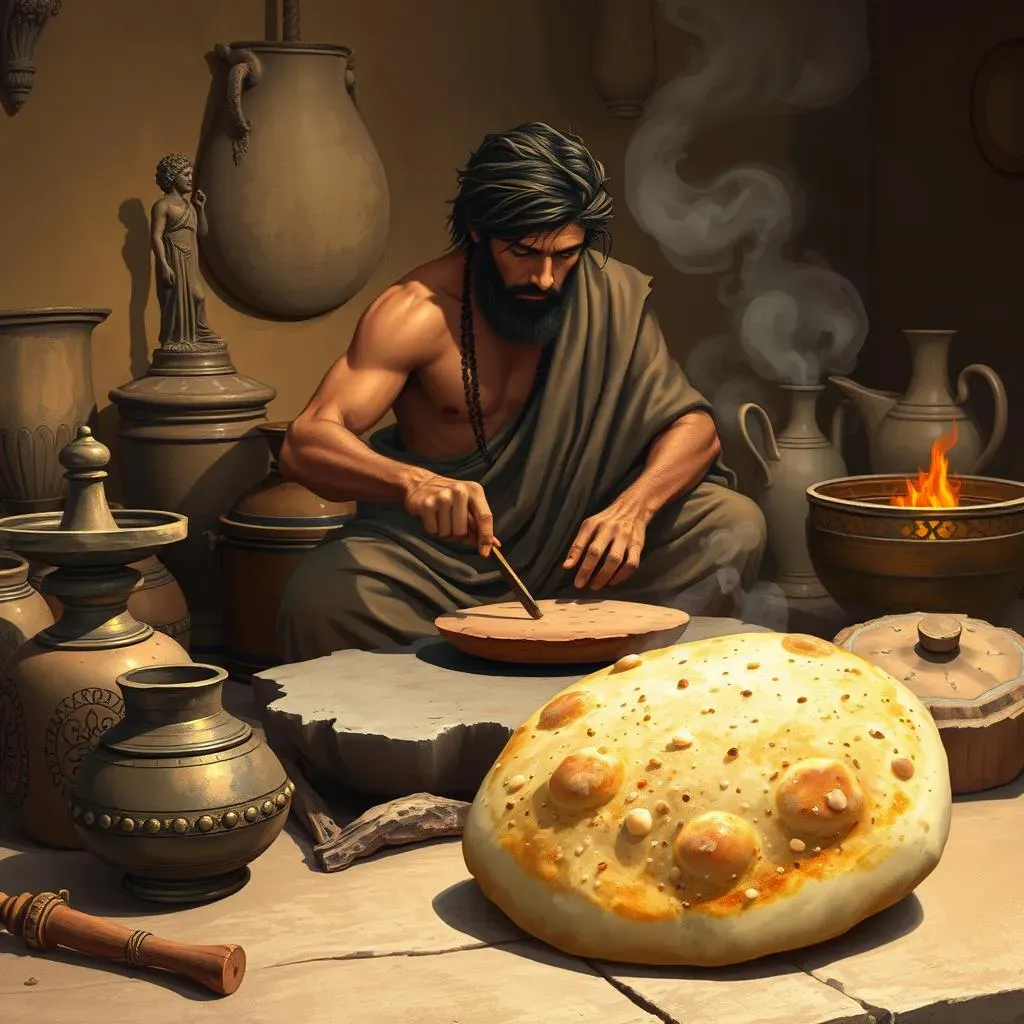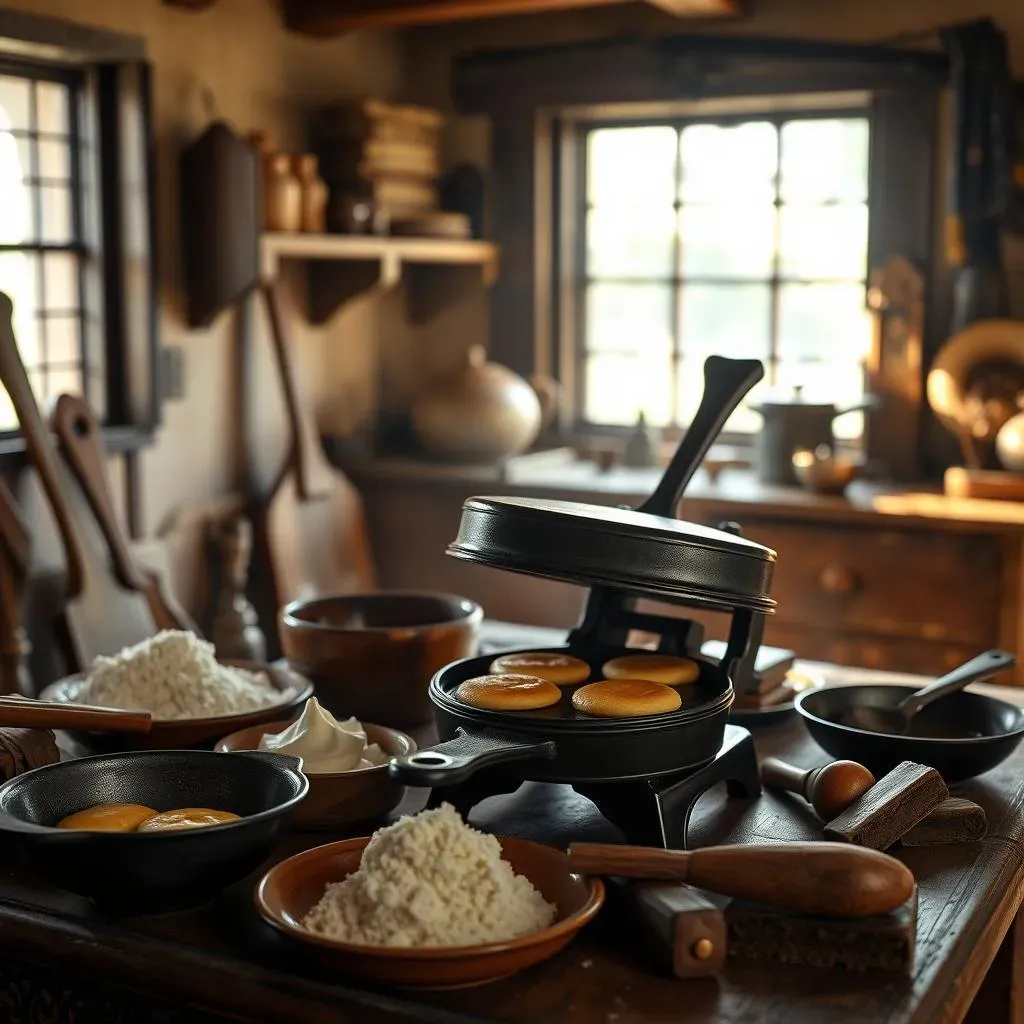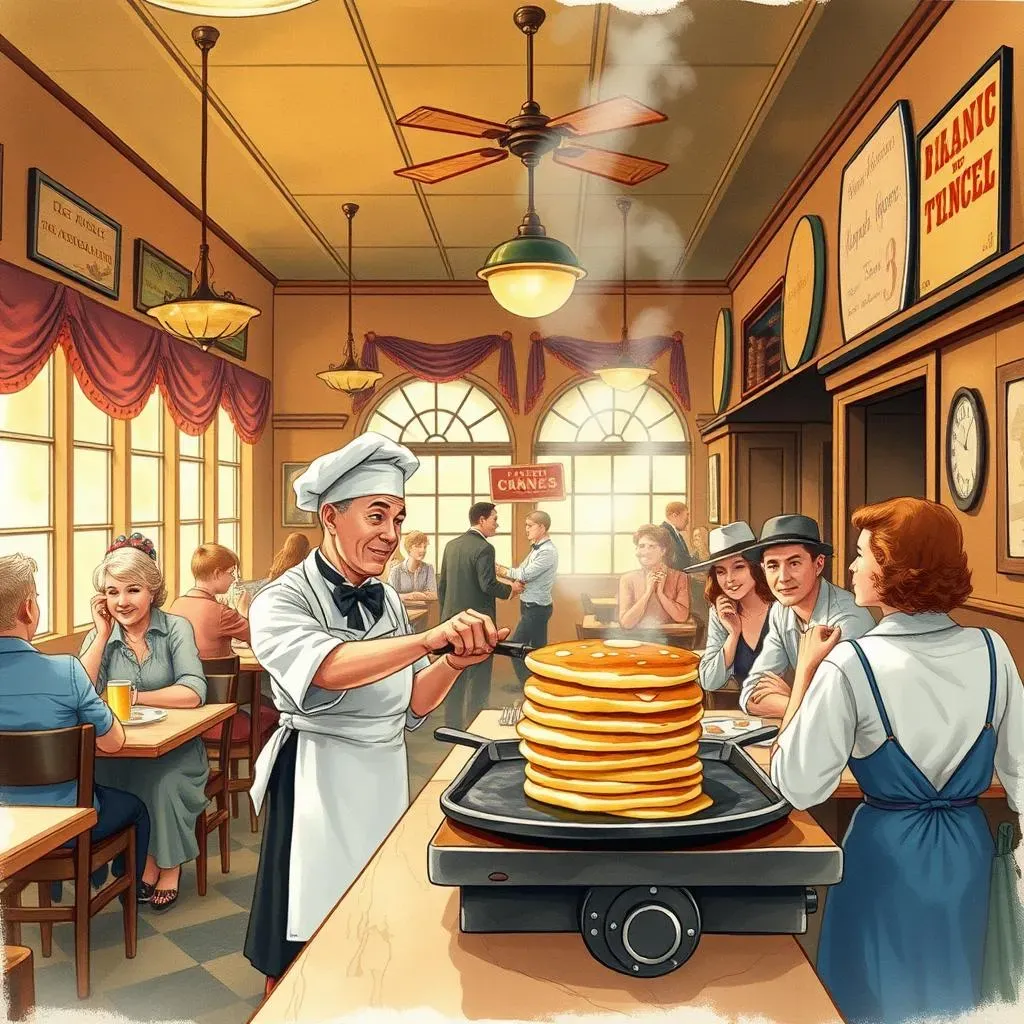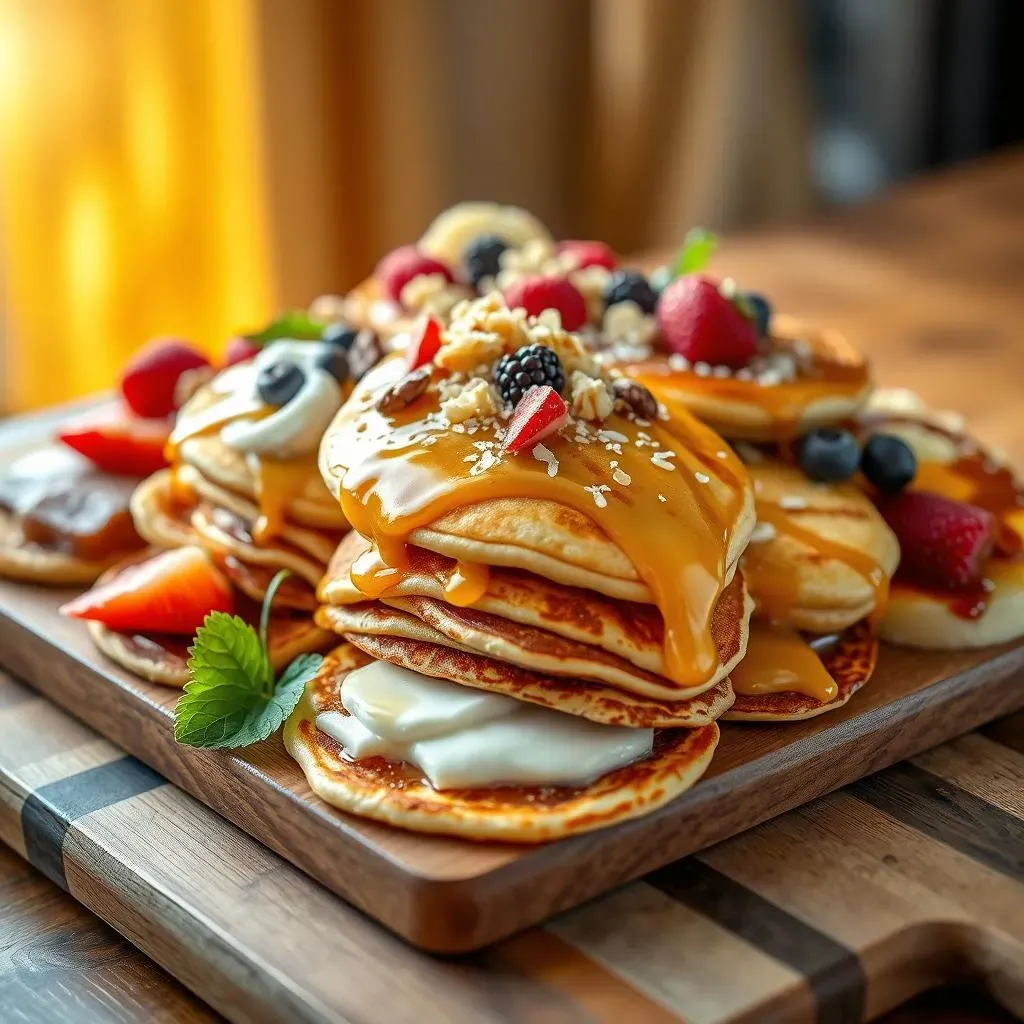Table of Contents
Have you ever wondered about the fluffy disks of joy we call pancakes? They're a breakfast staple, but their story is way older and more global than you might think. We're not just talking about the stack you get at your local diner, we're going way back, exploring the question of "how were pancakes made" across different eras and cultures. It turns out, the simple pancake has a fascinating past! This article will take you on a journey, starting from ancient times, through the American colonies, and around the world, to see how different peoples have made their own versions of this beloved food. We'll uncover the secrets of how they were made, the ingredients they used, and how this humble dish became a breakfast icon. So, get your syrup ready, and let's flip through the pages of pancake history!
The Ancient Origins of How Pancakes Were Made

The Ancient Origins of How Pancakes Were Made
Alright, let's talk ancient pancakes! Forget the fluffy stacks you know; we're going way back, like, way, way back. Imagine Stone Age humans, maybe around 5,000 years ago, cooking something that was pancake-ish. They didn't have Bisquick, obviously. Instead, they were mashing up grains and mixing them with water or milk, then slapping the goo onto hot stones. The result? A kind of flatbread, which is basically pancake's great-great-great-grandparent. Then the Greeks and Romans got in on the action. They weren't using maple syrup; they used honey. And instead of butter, they used olive oil. They called their version "tagenias," which makes me want to order a stack right now just to say it out loud. It's kind of wild to think that even back then, people were figuring out how to make a simple batter and cook it on a hot surface. It’s a simple idea that has stuck around for thousands of years.
Ancient Culture | Pancake Ingredients | Cooking Method |
|---|---|---|
Stone Age | Mashed grains, water or milk | Hot stones |
Ancient Greece/Rome | Wheat flour, olive oil, honey, curdled milk | Frying pan |
How Pancakes Were Made in the 1700s

How Pancakes Were Made in the 1700s
The Arrival of Dutch Pancakes
Fast forward to the 1700s, and things start to look a bit more like the pancakes we recognize today, especially in America. We can thank the Dutch for this! They brought their "pannekoeken" over to the colonies. These weren't exactly the fluffy buttermilk pancakes, but they were a significant step in that direction. Think of them as a thinner, larger version, often cooked in a pan over an open fire. These Dutch pancakes were a hit because they were easy and cheap to make, perfect for feeding a big family. They quickly became a staple in the American diet.
Early American Ingredients
How were these early American pancakes made? Well, they were made with simple ingredients. They often used buckwheat or cornmeal instead of wheat flour, which was more common in Europe. This gave them a different texture and flavor profile, a little nuttier and heartier. They mixed the flour or meal with water or milk, maybe added a bit of fat, like lard, and cooked them on a griddle or in a pan. No fancy equipment or ingredients needed! They were a practical and satisfying meal, especially for those settling in new lands. They were called hoecakes, johnnycakes, or flapjacks, depending on where you were.
The Growing Popularity
Pancakes during this time weren't just for breakfast; they were an easy meal anytime. They were versatile, too. Some people added fruits or nuts to the batter, while others enjoyed them plain with a drizzle of molasses or honey. The ease and adaptability of pancakes made them a popular choice for a wide range of people. As the 1700s progressed, pancakes were becoming increasingly ingrained in the American culinary landscape. You could argue that the 1700s were the beginning of the pancake's journey to becoming the breakfast icon we know and love today.
Pancake Name | Main Ingredients | Common Additions |
|---|---|---|
Pannekoeken | Wheat flour, milk, eggs (Dutch version) | None usually |
Hoecakes/Johnnycakes/Flapjacks | Buckwheat or cornmeal, water or milk | Fruits, nuts, molasses, honey |
The Rise of the American Pancake and How Were Pancakes Made

The Rise of the American Pancake and How Were Pancakes Made
So, how did we get from those simple hoecakes to the fluffy stacks we know and love? Well, the late 1800s and early 1900s were a game-changer for pancakes. This is when diners started popping up all over the US, and they needed a cheap, satisfying, and quick-to-make breakfast option. Enter: the American diner-style pancake. We're talking about the ones made with wheat flour, baking powder (for that lift), maybe some sugar, and buttermilk for that tangy flavor. These weren't your grandma's flapjacks anymore; they were the new kids on the block. They were light, airy, and perfect for soaking up syrup. The rise of diners and the introduction of these new pancakes went hand in hand, both fueling each other's popularity. It's like they were made for each other!
The Diner Revolution
Diners weren't just about the food; they were a social hub, a place where people from all walks of life could come together over a hot meal. And what was often on the menu? Pancakes! The diner helped make pancakes a truly national phenomenon. They became a symbol of American breakfast culture, a dish that everyone could enjoy. The diner wasn't just selling pancakes; they were selling a feeling—comfort, community, and a darn good start to the day. The convenience and consistency of these pancakes were a major draw, and they quickly became a staple on breakfast menus across the country. It's funny how something as simple as a pancake can become such an important part of a culture, isn't it?
Era | Pancake Style | Key Characteristics |
|---|---|---|
Early American | Hoecakes, Johnnycakes, Flapjacks | Made with cornmeal or buckwheat, dense, cooked on a griddle |
Late 1800s/Early 1900s | American Diner-Style Pancakes | Made with wheat flour, baking powder, buttermilk, fluffy, served in stacks |
The Rise of Pancake Mixes
And if you thought it couldn't get any easier, think again. The early 1900s also saw the rise of pre-made pancake mixes, like Bisquick, which made it even easier to whip up a batch of pancakes at home. Now, you didn't even need to measure out the flour or baking powder; it was all in the box! This convenience further cemented the pancake's place in the American home, making it a go-to breakfast option for busy families. It's almost like they were designed for lazy Sunday mornings and quick weekday breakfasts. The mix made pancakes accessible to everyone, no matter their cooking skill level. It's amazing how a simple mix could change the way we eat breakfast.
International Variations: How Different Cultures Made Pancakes

International Variations: How Different Cultures Made Pancakes
A World of Flatbreads
Okay, so we’ve talked about how pancakes evolved in America, but let's face it, the rest of the world isn't sitting around eating only American-style pancakes. Every culture seems to have its own version of a cooked batter, and it’s amazing how diverse they can be! Think of it like this: the basic idea is the same—a batter cooked on a hot surface—but the ingredients, techniques, and flavors vary wildly. It's like everyone got the same basic recipe, then decided to do their own thing with it. From thin crepes to thick, spongy delights, the world of pancakes is a delicious adventure. It’s not just about breakfast; it's about how different cultures have adapted a simple idea to fit their own tastes and traditions.
Sweet and Savory Creations
Let's take a quick trip around the globe, shall we? In France, they have crepes, which are super thin and delicate, often filled with sweet things like Nutella or fruit. Over in Russia, they’ve got blini, which are small, yeasted pancakes that can be served with savory toppings like smoked salmon or sour cream. Then there's the Danish Æbleskiver, which are these cute, round pancake balls, usually eaten during Christmas. And that’s just the tip of the iceberg! Each of these variations has its own unique flavor profile and preparation method, showcasing the ingenuity of different cultures. You'll find some are savory, others sweet, some are thick, and others are thin, but they all share that same basic concept of cooked batter.
Unique Ingredients and Fillings
The variations don't stop at the shape and size. In Vietnam, you'll find Bánh xèo, a savory crepe made with rice flour and coconut milk, filled with shrimp, pork, and bean sprouts. Then there are the Venezuelan cachapas, which are made with fresh corn and often served with cheese. These are a far cry from the typical American buttermilk pancake. The use of local ingredients is a common theme, making each pancake a true reflection of its culture. From rice flour to corn, from seafood to cheese, the possibilities are endless. It's a reminder that even something as simple as a pancake can be a canvas for creativity and cultural expression.
Country | Pancake Name | Key Ingredients | Common Fillings/Toppings |
|---|---|---|---|
France | Crepes | Wheat flour, eggs, milk | Nutella, fruit, jam |
Russia | Blini | Wheat flour, yeast, milk | Smoked salmon, sour cream, caviar |
Denmark | Æbleskiver | Wheat flour, buttermilk, eggs | Powdered sugar, jam |
Vietnam | Bánh xèo | Rice flour, coconut milk, turmeric | Shrimp, pork, bean sprouts |
Venezuela | Cachapas | Fresh corn, sugar, salt | Cheese |
A Stack of History: The Enduring Legacy of Pancakes
From ancient griddles to modern kitchens, pancakes have journeyed through time, picking up flavors and techniques along the way. The question of "how were pancakes made" reveals not just a recipe, but a story of cultural exchange and culinary innovation. Whether it's a simple crepe, a fluffy American stack, or a savory cachapa, each pancake tells a tale of the people who created it. It’s amazing to think that something so simple could have such a rich and diverse history. So, next time you’re enjoying a stack, remember you're partaking in a tradition that spans millennia, a testament to the enduring appeal of this humble, yet delicious, food.